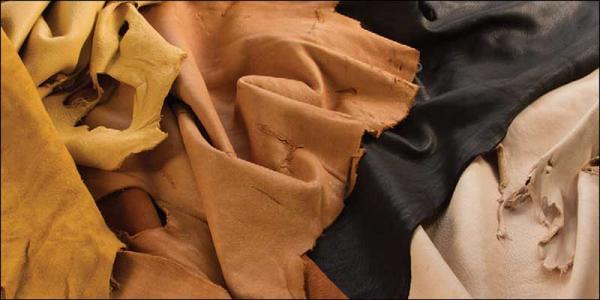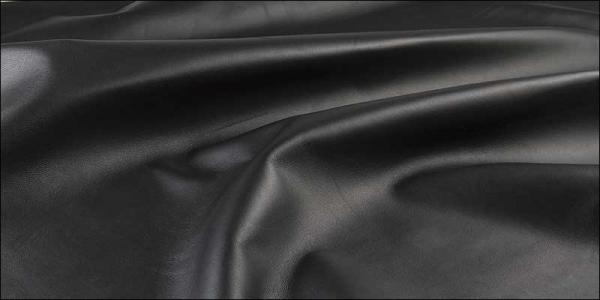Fact Check
Which Types of Leathers are the Softest?
Leather goods are known for their incredible toughness and longevity, not to mention their beauty and supple texture.
Consequently, though, this often means leather is a very sturdy and somewhat rigid material.
However, there are some kinds of leather with an extra feeling of softness to them that many people have yet to try out.
Your standard leather, whether it be in the form of a coat, a couch, or whatever else you like, is made from cowhide. Cowhide is extremely strong and not likely to tear apart, but this does make it slightly stiff when used in making a piece of clothing.
Two other forms of leather can be made from the hides of lambs and deer.
These forms of hide are also very strong but are known to be much softer feeling than cowhide.
And the winners are...
Let’s explore why this is and what kind of trade offs they have when compared to cowhide leather.
Deerskin Leather
Deerskin leather is much softer than cowhide, known for its extreme resistance to the cold and water.
Owing to the animal it’s produced from, deerskin leather has the ability to grow warmer in cold weather while cooling off in warm weather, making it appropriate to wear in almost any kind of climate.
Deerskin manages to accomplish these feats due to the structure of the hide it’s made from, which has the natural ability to trap air between its layers, making it feel even more lightweight and soft than it already is.
Like all forms of hide, it’s very durable and abrasion resistant, giving it a high level of longevity.
Lambskin Leather
Lambskin is the softest type of leather you can find, given that it comes from an animal that had yet to mature fully like other sources of hide.
It’s light, airy layered structure gives it an exceptionally soft, velvet-like texture. The natural layers also help to trap air inside the fabric, helping to keep you warm in cold climates.
Disadvantage of Soft Leather
The major downside to wearing a soft form of leather is its lack of sturdiness when compared to cowhide.
While still very durable (they’re leather, after all), both deerskin and lambskin aren’t as equipped to handle being damaged as cow leather. This is especially true for lambskin, its softness working against it to the point that it must be delicately manipulated during manufacturing to avoid ruining it.
It’s also more prone to stretching than either of the other options and wears out faster.
Additionally, these forms of leather might cost more than traditional cowhide, as their softer and more luxurious appearance is often utilized in making more decorative or designer clothing and accessories.
Caring for Soft Leather
Just as with any leather products, soft leather requires care and maintenance to stay strong and beautiful over the years.
However, both deerskin and lambskin leather have their own needs when it comes to care different from cowhide leather. This has as much to do with their softness as it does the materials that go into making them.
Given its reputation for lasting quality, deerskin leather goods require comparatively little maintenance.
This isn’t to say they need none, however, as there are still a few things you should be doing to help your deerskin retain its natural qualities and keep from being ruined.
Sunlight
Firstly, keep your deerskin out of direct sunlight when storing it. Excessive, prolonged heat can dry out all kinds of leather, so keeping it in a dark, climate controlled area like a closet when not in use is the best option.
No Extra Waterproofing
Also, refrain from trying to use any sort of water treating solutions of waterproofing treatments on your deerskin. Deerskin is naturally water resistant, so trying to waterproof it any further will do nothing at best, and potentially damage your leather at worst.
If your deerskin does become excessively wet, though, simply wipe away and soak up moisture with a dry towel, applying leather conditioner if the piece seems like it may have begun to dry out.
Cleaning
For cleaning stains, be sure to first identify what caused the marks. If it is something greasy or oily, cover the spot with flour, cornstarch, or baby powder for two hours before rinsing with warm water and a mild soap, drying after.
For other kinds of stains, simply rinse with water, using a mild soap if the stain persists. Be very careful about trying to buff out anything that appears to be scratches, as aggressive actions could severely damage the leather.
Additionally, deerskin leather is naturally patterned, meaning what looks like a scratch might simply be the way the material is patterned.
Lambskin Care
For lambskin, most of the same tips apply. However, it’s extremely crucial that you take even more care when working with your lambskin, as the delicacy of the material could cause it to become damaged much easier than deerskin or cowhide.
In fact, it’s because of this that it’s highly recommended to apply a lambskin protectant solution specially designed for delicate leather to your items before you even wear or use them the first time. While you can buy products for this purpose and do it at home, it’s safer to hire a professional to do it for you.
Leather Conditioner
Finally, whether it’s deerskin or lambskin or even just cowhide, all leather goods can benefit from a good polishing with a leather conditioner.
For best results, select one specifically formulated for exotic types of leather when conditioning your delicate goods.
Remember to test any kind of conditioner on a discreet part of your leather items before committing to using them, though, as they may have an adverse reaction to certain pieces of leather and result in severe darkening no matter what the color appears like on the cloth you’ll be applying it with.
Also remember not to place your leather within a plastic wrapper, as this can cause it to dry out, and to use padded hangers to store clothing items to help them retain their shape better.
Conclusion
Soft leather is a great choice for soft, elegant clothing and accessories that can still hold up to the challenges of everyday life.
Though not as strong or affordable as the more common cowhide leather, deerskin and lambskin leather are more than worth the risk when it comes to feeling and looking good.


